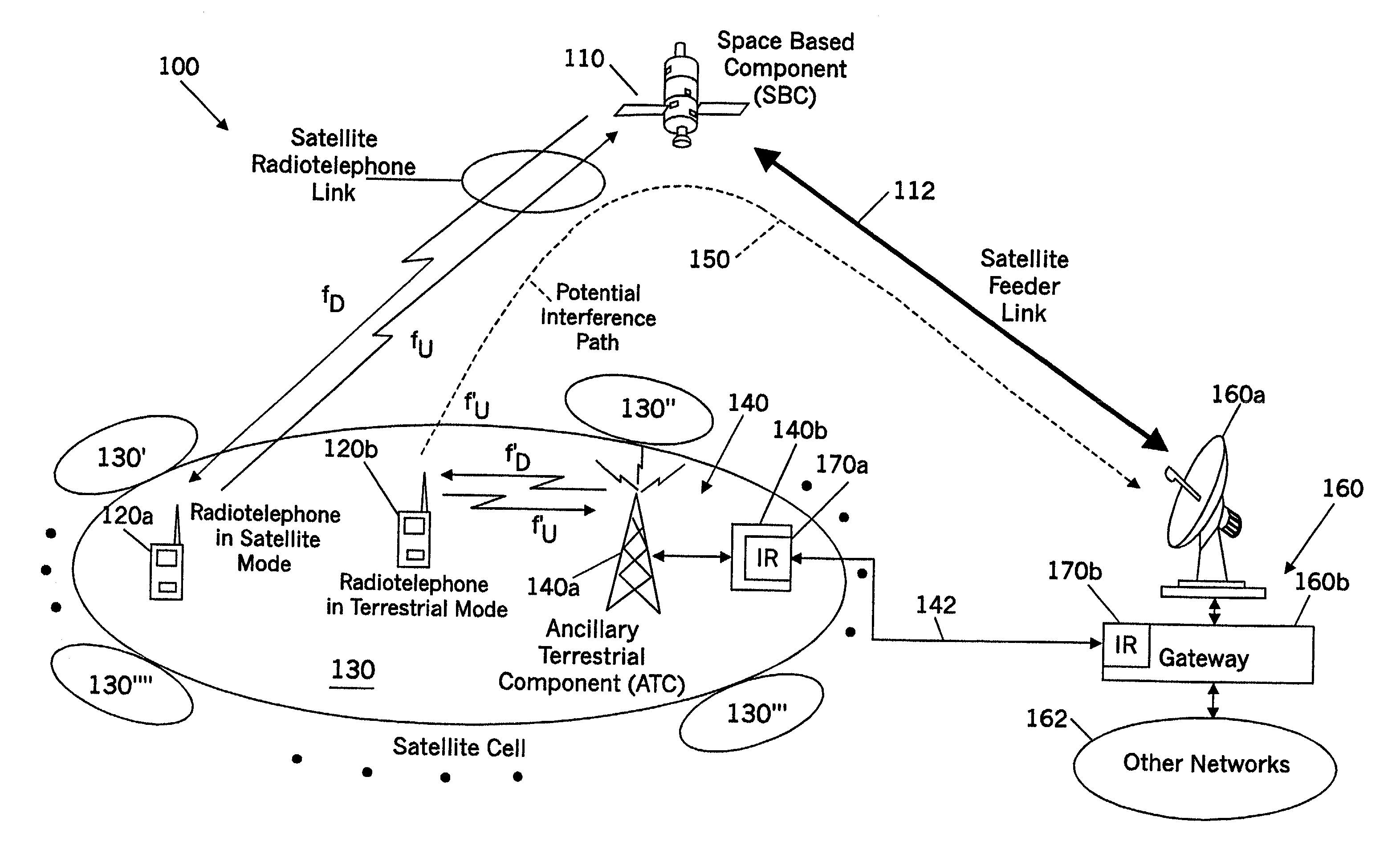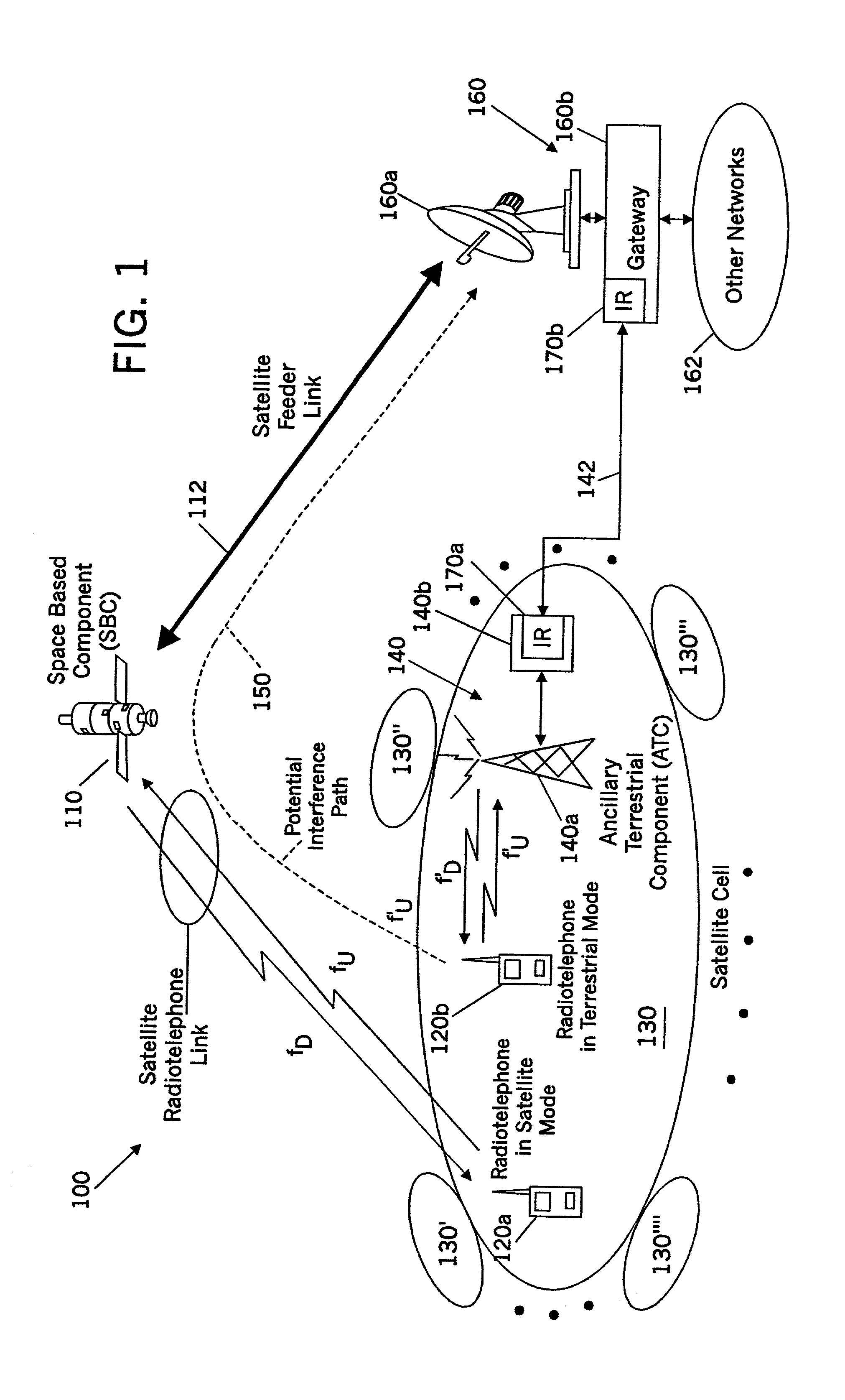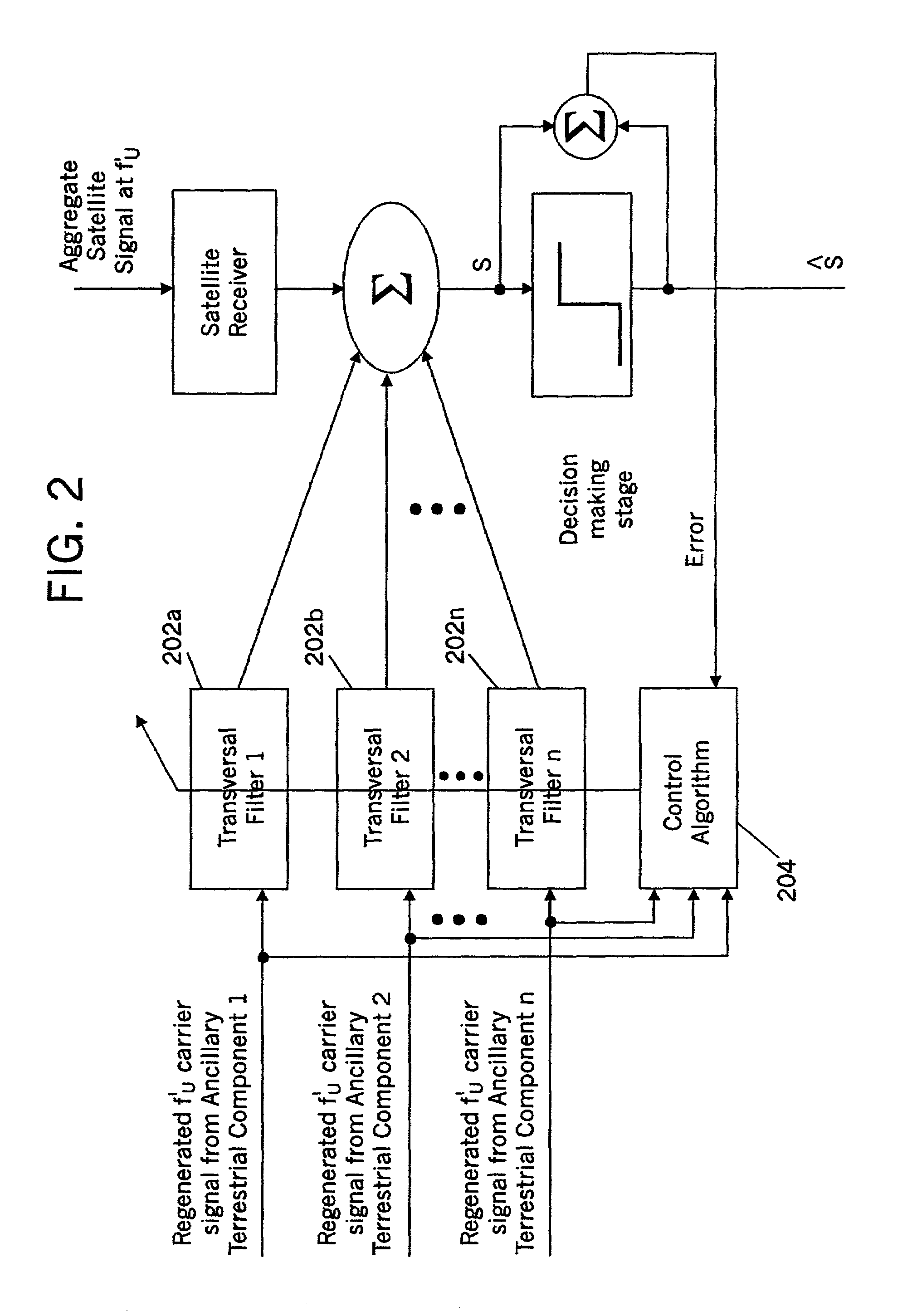Systems and methods for monitoring terrestrially reused satellite frequencies to reduce potential interference
a technology of terrestrial radiotelephone and satellite frequency, applied in the field of radiotelephone communications systems and methods, can solve problems such as interference, and achieve the effect of reducing interference and preferably preventing interference with other satellite radiotelephone systems
- Summary
- Abstract
- Description
- Claims
- Application Information
AI Technical Summary
Benefits of technology
Problems solved by technology
Method used
Image
Examples
Embodiment Construction
[0038]The present invention now will be described more fully hereinafter with reference to the accompanying drawings, in which typical embodiments of the invention are shown. This invention may, however, be embodied in many different forms and should not be construed as limited to the embodiments set forth herein. Rather, these embodiments are provided so that this disclosure will be thorough and complete, and will fully convey the scope of the invention to those skilled in the art. Like numbers refer to like elements throughout.
[0039]FIG. 1 is a schematic diagram of cellular satellite radiotelephone systems and methods according to embodiments of the invention. As shown in FIG. 1, these cellular satellite radiotelephone systems and methods 100 include at least one Space-Based Component (SBC) 110, such as a satellite. The space-based component 110 is configured to transmit wireless communications to a plurality of radiotelephones 120a, 120b in a satellite footprint comprising one or...
PUM
 Login to View More
Login to View More Abstract
Description
Claims
Application Information
 Login to View More
Login to View More - R&D
- Intellectual Property
- Life Sciences
- Materials
- Tech Scout
- Unparalleled Data Quality
- Higher Quality Content
- 60% Fewer Hallucinations
Browse by: Latest US Patents, China's latest patents, Technical Efficacy Thesaurus, Application Domain, Technology Topic, Popular Technical Reports.
© 2025 PatSnap. All rights reserved.Legal|Privacy policy|Modern Slavery Act Transparency Statement|Sitemap|About US| Contact US: help@patsnap.com



